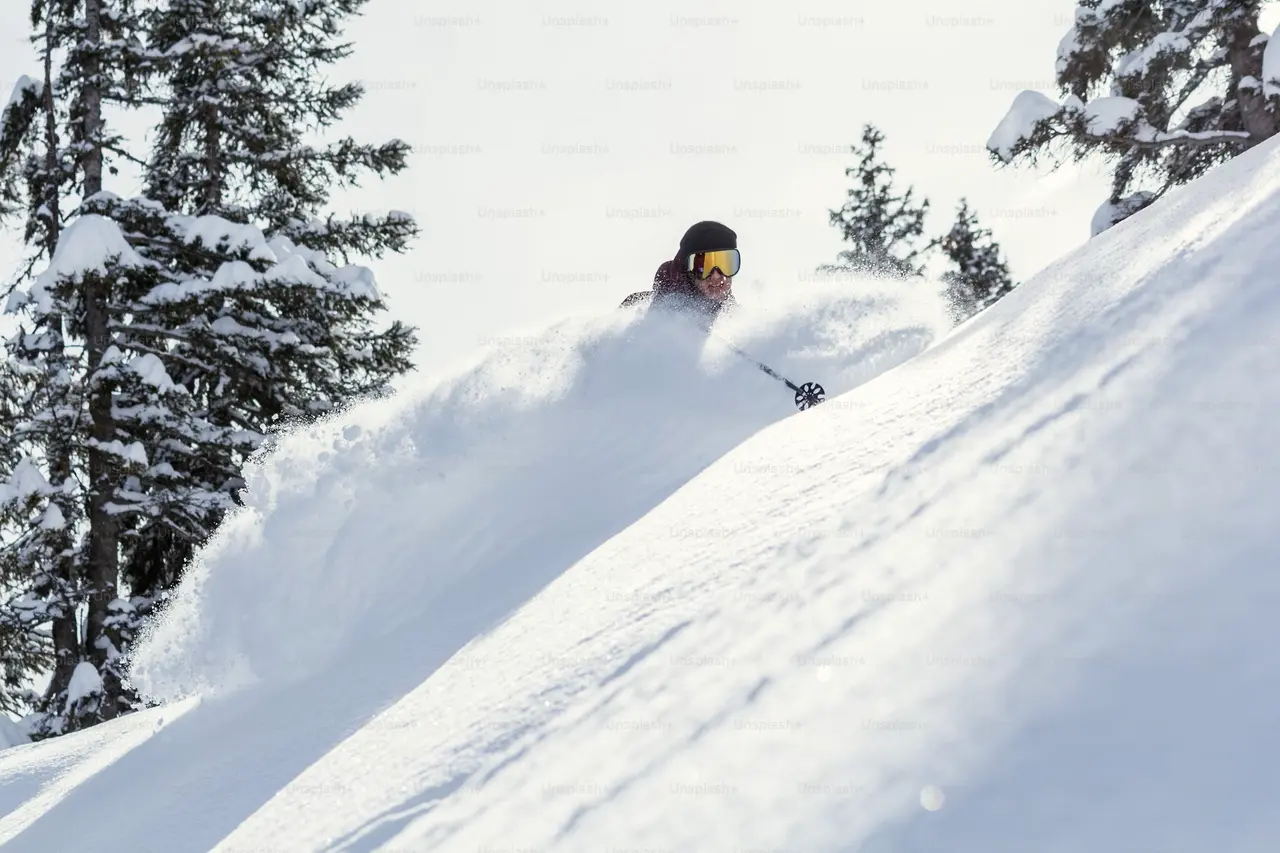Backcountry skiing has become a thrilling and popular escape for many winter sports enthusiasts. As more adventurers seek solitude in untouched snowy landscapes, understanding the basics and prioritizing safety is more important than ever. This guide will not only discuss the burgeoning appeal of backcountry skiing but will also provide essential safety tips and must-have gear recommendations.
Understanding the Allure of Backcountry Skiing
Backcountry skiing offers a unique experience that combines the thrill of skiing with the serenity of nature. Away from the crowded resorts, skiers are drawn to the unspoiled landscapes and the challenge of carving their own paths through fresh snow. This section explores what makes backcountry skiing so appealing to adventurers and nature lovers alike. There is something undeniably magical about leaving the bustling ski lifts behind and stepping into a world where everything is untouched and pristine. As you traverse through snow-covered trees and open valleys, you’ll not only improve your skiing skill but also connect deeply with nature.
While the beauty is undeniable, the allure of backcountry skiing also lies in its ability to offer both physical and mental challenges. Skiers find themselves relying on their instincts and abilities in unpredictable conditions, which fosters a deep sense of accomplishment and empowerment. To many, the backcountry experience is akin to a form of meditation—it’s about being present in the moment, surrounded by breathtaking landscapes that humble and inspire. Ultimately, it’s about the freedom and self-reliance that only the backcountry can provide.
Essential Safety Knowledge for Backcountry Skiing
Safety is paramount when it comes to backcountry skiing. This section covers essential safety knowledge, including understanding avalanche risks, reading snow conditions, and recognizing warning signs. It highlights the importance of taking avalanche safety courses and acquiring the skills necessary to navigate the backcountry safely. Knowing how to read terrain and assessing avalanche dangers are foundational skills every backcountry skier must develop. Furthermore, keeping updated with local avalanche forecasts and trail conditions is crucial for making informed decisions.
In addition to understanding avalanches, skiers should be prepared for sudden weather changes. The backcountry is notorious for its unpredictable weather patterns, which can quickly turn a sunny day into a stormy ordeal. Learning how to interpret weather forecasts and adjust plans accordingly can mean the difference between a safe journey and a perilous one. Moreover, constantly communicating with your skiing partners and being aware of each other’s zones of safety while on the slopes can mitigate risks significantly. Always err on the side of caution, as the backcountry is no place for taking unnecessary risks.
Another key aspect of safety is recognizing the importance of group dynamics. Skiers should always travel in groups, as this not only enhances safety but also makes the experience more enjoyable. Establish a clear communication system with your group before heading out and assign roles based on each person’s strengths and experience. In challenging environments like the backcountry, the synergy of a well-coordinated team can be just as crucial as individual skills and knowledge. Remember, you are far more likely to safely enjoy your adventure when you operate as a cohesive unit rather than as a collection of solo adventurers.
Must-Have Gear for Backcountry Skiers
The right gear can make all the difference in ensuring a safe and enjoyable backcountry skiing experience. This section lists the essential equipment every skier should have, such as avalanche beacons, shovels, probes, and proper clothing. Investing in a high-quality avalanche beacon is crucial, as it is your lifeline in case of an emergency. Moreover, your clothing should be layered in a way that allows for easy adjustments to changing weather conditions.
While technical gear is crucial, don’t underestimate the importance of the right skis, boots, and bindings. Backcountry skis are typically lighter and narrower than regular alpine skis, providing greater control and agility in mixed terrain. Boots should be comfortable yet supportive, enabling you to handle diverse conditions with ease. Bindings must also match your specific skiing style and skill level to ensure optimal performance and safety. Take your time when choosing your gear, as settling on the right equipment can significantly enhance your skiing experience and provide peace of mind in remote settings.
Equally important is having the right navigation tools, such as a GPS device and topographical maps, to help guide your trek through unfamiliar terrain. Consider using apps specifically designed for backcountry skiing, which offer detailed maps and real-time updates on snow conditions. Carrying a reliable multi-tool is also wise, as it can aid in on-the-spot gear repair. A well-stocked first-aid kit should be part of your gear to attend to any injuries that may occur. Remember, always double-check your equipment before heading out and perform routine maintenance to ensure everything is in working order.
Lastly, bring along essential survival gear such as extra food, water purification tools, and emergency shelters. These items can be an absolute lifesaver if you find yourself in an unplanned overnight situation or face unexpected delays. Packing a small yet durable backpack to accommodate both your safety gear and personal supplies will ensure you’re prepared for any scenario the backcountry throws your way. Being well-equipped not only increases your safety but also enhances the overall enjoyment of the skiing adventure, providing a sense of readiness and confidence as you explore nature’s wonders.
Planning Your Backcountry Skiing Adventure
Proper planning is crucial for a successful and safe backcountry skiing trip. Learn about route selection, weather considerations, and group dynamics. One of the first steps is to study the terrain and choose routes that match your skill level and experience. Websites and forums dedicated to backcountry skiing can provide valuable insights and route recommendations based on firsthand experiences. Additionally, always check the latest weather forecasts and avalanche reports to ensure the conditions are optimal for your adventure.
Planning doesn’t stop at route selection; it’s equally important to create a detailed itinerary that includes contingency plans for unexpected changes in weather or group dynamics. Communicate your skiing plans with a trusted friend or family member who will not be part of the journey so that someone knows your expected return time. In case of emergencies, this extra layer of communication can facilitate rescue operations if necessary. Having multiple landmarks and checkpoints on your route can help you stay on track and adjust plans if weather conditions deteriorate.
Moreover, it’s critical to ensure that all group members are on the same page regarding the trip’s objectives and each person’s responsibilities. Having clear and agreed-upon goals can reduce misunderstandings and increase enjoyment for everyone involved. Practice team-building activities before heading out to solidify group cohesion and enhance communication skills. Encouraging open discussions about each person’s expectations and concerns can help build trust and create a safety net that enhances security for everyone involved.
Being adaptable to changing conditions is a cornerstone of effective trip planning. In the backcountry, conditions can shift rapidly, requiring skiers to modify their plans accordingly. Being flexible means being prepared to cut a trip short if necessary, prioritizing safety above all else. Keeping an open mind and remaining vigilant can make the difference between a thrilling adventure and a troublesome ordeal. Remember, the mountains will always be there, and it’s better to return at a safer time than to take unnecessary risks.
Real-life Experiences and Lessons Learned
Hearing from experienced backcountry skiers can provide invaluable insights and inspiration. This section shares real-life stories and lessons learned from those who have ventured into the backcountry. Many seasoned skiers emphasize the importance of humility in the face of nature’s power. One significant lesson often shared is the importance of always being prepared for the unexpected. Even the most experienced skiers encounter challenges that test their skills and resolve, reinforcing the need for ongoing training and adaptability.
In testimonials from seasoned skiers, there is a common theme of respect for nature’s unpredictability. Stories abound of sudden weather shifts or close encounters with avalanches that serve as stark reminders of the intrinsic risks involved in backcountry skiing. These experiences underlie the importance of constant vigilance and resilience. Some skiers mention the value of encountering these challenges, as they foster personal growth and a deeper appreciation for both the sport and the environment.
Furthermore, stories from the backcountry often include moments of camaraderie and teamwork. Shared challenges strengthen bonds between group members, turning daunting situations into collaborative victories. For many, the friendships formed in these intimate settings are as rewarding as the skiing itself. Collaborative decision-making and shared responsibility enhance not only safety but also the collective joy derived from conquering the backcountry’s unique challenges together. Such experiences become cherished memories that enrich a skier’s life beyond the sport.
Embrace the Thrill Safely
As you embark on your backcountry skiing adventures, remember that preparation and knowledge are key. By having the right gear, planning ahead, and always prioritizing safety, you can enjoy the breathtaking beauty and thrill of backcountry skiing while minimizing risks. Let the mountains be a place of joy and peaceful solitude, all while keeping safety at the forefront of your mind.



Share:
Slope Secrets: How to Plan the Ultimate Ski Vacation on a Budget
Ski Like a Pro: Insider Tips for Mastering the Mountain